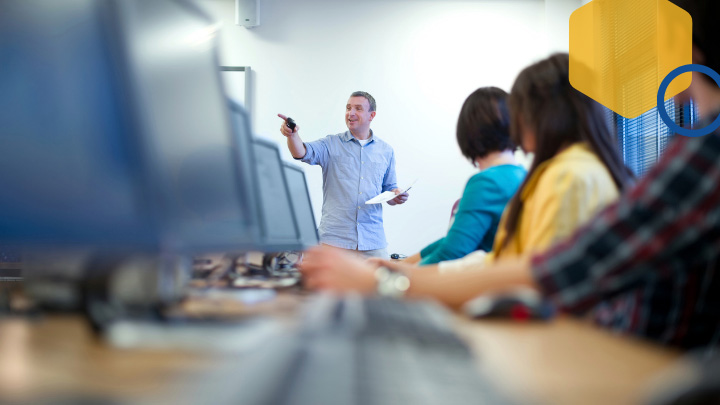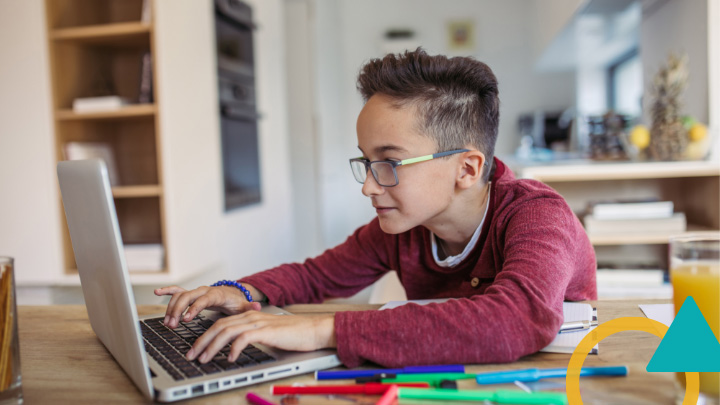With states across the country still grappling with COVID-19, more and more districts are rolling out plans for a hybrid instructional model: some in-person instruction and some remote instruction. While there are many versions of what a hybrid learning model may look like, there’s one thing that remains constant: teachers are figuring out how to make the most of their in-person time with students. As an instructional coach, I’ve heard teachers across the country asking questions about assessment in a hybrid model, wrestling with what it means to meet the needs of all learners when you only see students for a limited time, and redesigning curriculum to work in a hybrid model. From these conversations, it is clear that as schools reopen, our in-person time with students is going to be very different than what we’re used to.
Below are three things to keep in mind when planning for in-person instruction in a hybrid learning model.
1. Building Connections and Relationships with Students
Remote learning from March-June was difficult, but we had the benefit of getting to know our students since the beginning of the year. When schools reopen, we will have a whole new set of students to connect with. While you may feel compelled to cram content to make up for lost time, it will be critical to use our in-person time to develop relationships, learn about our students’ experiences, and build trust.
This could look like:
- Getting to know students through writing. A strategy like I Wish My Teacher Knew or a daily journaling routine can help students share about themselves. Consider modeling the writing so students can learn about you too, and responding to students’ writing to build a strong relationship.
- Using student surveys. This interest survey strategy is a great place to start. Surveys can help educators learn about students’ specific experiences with the pandemic, such as if they have a family member who was or is an essential worker, or if they have dealt with serious illness or loss.
- Connecting students with resources. Whether this means connecting students with a school counselor or making sure students have access to meals, using students’ in-person time to make sure they have what they need to be safe and healthy is critical.
2. Clarify Content Misconceptions
The teachers I coach were concerned with how long certain things take in remote learning, such as clarifying small misconceptions or redirecting a student to be successful at a task. We can use our valuable in-person time with students to do instruction that is most effective in person.
Consider:
- Re-teaching content to students in small group sessions or in 1:1 student conferences. If you notice a trend of students struggling with a certain concept while in remote learning, use your in-person time to work with this group of students.
- Creating opportunities for students to collaborate (in socially-distanced ways) and teach one another. Check out the Rally Coach strategy for more ideas.
- Identify the most critical content or curriculum to focus on. In our limited time with students, we won’t be able to do everything that we normally do. In a hybrid model, use in-person time to prioritize the content or curriculum that is most essential to students. Creating a Mastery Map of the most essential standards is one place to start.
3. Set Students Up for Success in Remote Learning
One of the challenges from this spring that I’ve heard from teachers again and again is the difficulty in helping students navigate online spaces and tech tools and keeping track of their remote work. Tasks that take mere seconds in a traditional setting take lots of back and forth in a remote setting. Use your in-person time to make sure students are set up for success when they’re not with you.
Consider:
- Creating routines that are consistent in both spaces. Whether online or remote, building consistency will help all students familiarize themselves with daily routines, such as completing a warm up or daily check-in, setting a daily or weekly goal, referring to a checklist, or getting started on a posted task. Read more here, or consider creating a Process Map to help students know what to do daily, whether in-person or at home.
- Developing a buddy system for students. Assign students a buddy with whom they are responsible for checking in at designated times to make sure both students know what to do and how to do the task remotely.
- Making space to explore tech tools that students will use in remote learning. Allowing time for students to see a teacher-led tutorial on how to use the tool, review expectations and procedures, and practice using the tool in a low-stakes setting will help students succeed remotely. Create space for students to problem-solve together as any issues arise. Consult the Better Lesson strategy Developing Norms and Expectations for Digital Tool Use for more ideas.
Although there is no doubt that this coming school year will be unlike any before, there are also some elements of great student-centered teaching that continue to be familiar. Fostering relationships, building connections, and developing trust with students remains at the center of our work. Similarly, helping students to achieve mastery of key standards will continue to be at the forefront of our practice. Finally, using our precious in-person time to practice routines and review expectations and procedures for remote learning will be valuable towards these goals.








